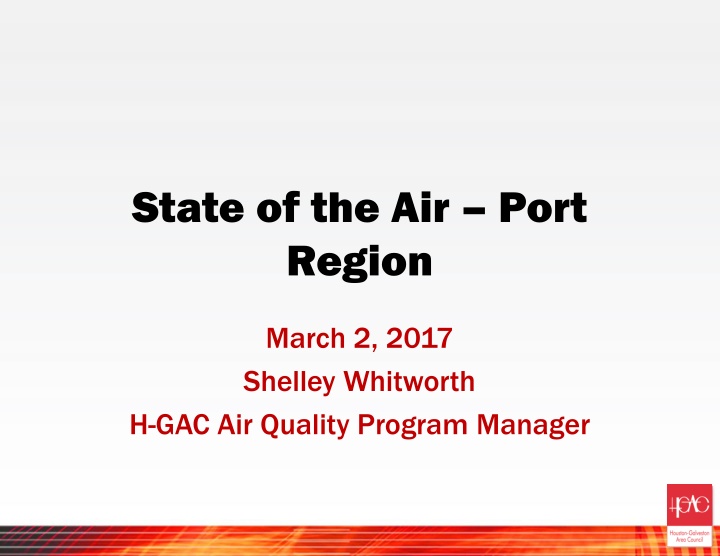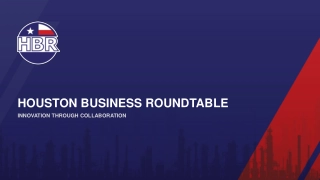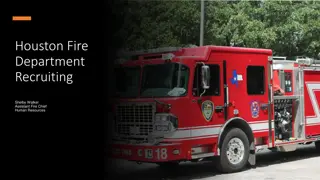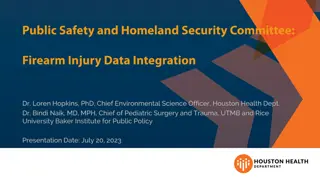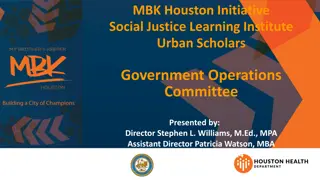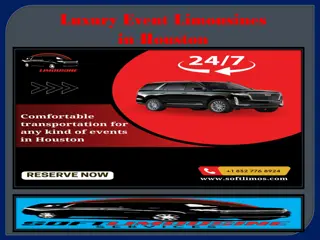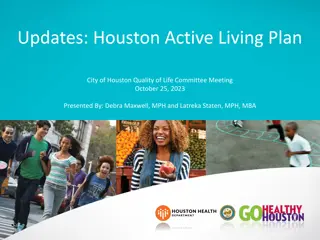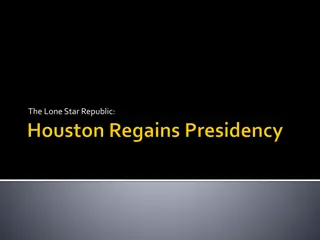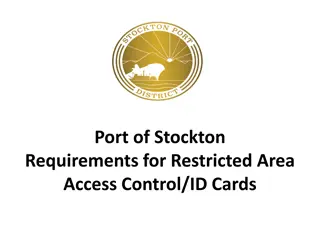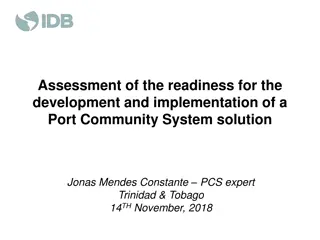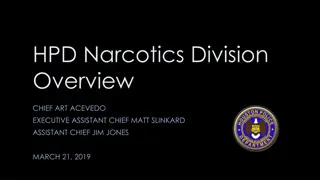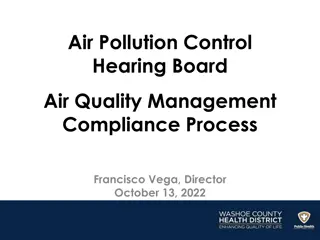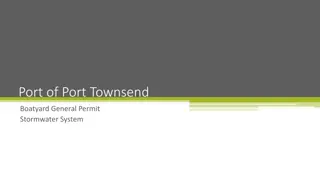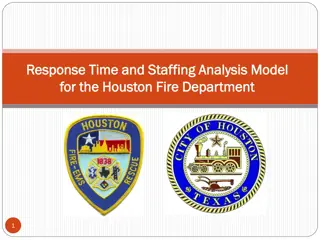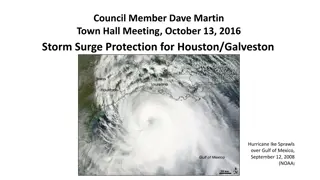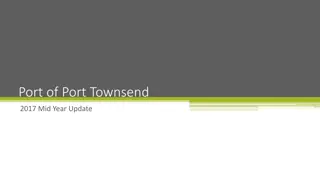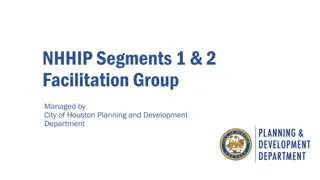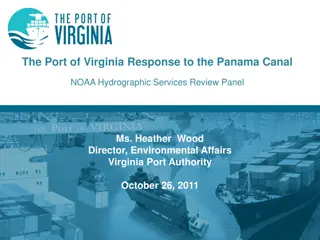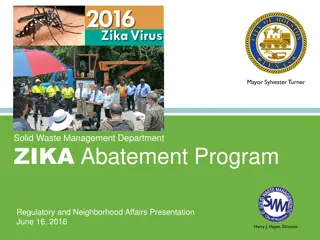State of the Air Port Region - Houston-Galveston Area Economics and Air Quality Compliance
The Houston-Galveston region boasts a growing population and diverse industrial base, yet faces challenges in meeting NAAQS for ozone. Explore the economic vibrancy and compliance efforts outlined for a better understanding of the region's dynamics and aspirations.
Download Presentation

Please find below an Image/Link to download the presentation.
The content on the website is provided AS IS for your information and personal use only. It may not be sold, licensed, or shared on other websites without obtaining consent from the author.If you encounter any issues during the download, it is possible that the publisher has removed the file from their server.
You are allowed to download the files provided on this website for personal or commercial use, subject to the condition that they are used lawfully. All files are the property of their respective owners.
The content on the website is provided AS IS for your information and personal use only. It may not be sold, licensed, or shared on other websites without obtaining consent from the author.
E N D
Presentation Transcript
State of the Air Port Region March 2, 2017 Shelley Whitworth H-GAC Air Quality Program Manager
The Houston-Galveston Region Region s population is currently 5.9 million, and is expected to reach 10 million by 2040 Metropolitan area covers almost 9,000 mi2 Economy has a broad industrial base in the energy, aeronautics, medical, and technology industries Home to over 5,000 energy related firms Port of Houston is the 10th largest port in the world and ranks 1st in the U.S. in international commerce
NAAQS Compliance NAAQS = National Ambient Air Quality Standards Federal standards designed to protect human health and the environment Regions need to meet standards in a range of pollutants including ozone Houston is moderate nonattainment (does not meet the standard for) ozone.
NAAQS Compliance TRAFFIC CONTROLS DURING CONGESTION (if appropriate) CLEAN FUELS REQUIREMENT FOR BOILERS PENALTY FEE PROGRAM FOR MAJOR SOURCES LOW VOC REFORMULATED GAS (as appropriate) VMT GROWTH OFFSET (& TCMs if needed) VMT DEMONSTRATION (& TCMs IF NEEDED) NSR REQUIREMENTS FOR EXISTING SOURCE MODS ENHANCED I/M CLEAN FUELS PROGRAM (If applicable) MODELED DEMO OF ATTAINMENT MILESTONE CONTINGENCY MEASURES FOR RFP 18% RFP OVER 6 YEARS ENHANCED MONITORING PLAN STAGE II GASOLINE VAPOR RECOVERY BASIC I/M CONTINGENCY MEASURES FOR FAILURE TO ATTAIN 15% RFP OVER 6 YEARS MAJOR SOURCE VOC/NOx RACT ATTAINMENT DEMONSTRATION TRANSPORTATION CONFORMITY DEMONSTRATION NEW SOURCE REVIEW PROGRAM MAJOR SOURCE EMISSION STATEMENTS BASELINE EMISSION INVENTORY (EI) PERIODIC EMISSION INVENTORY UPDATES
NAAQS Compliance: Timeline EPA recommends nonattainment designations for 2015 standard October 2017 EPA will finalize designations for 2015 standard October 2019 Emissions inventories due for 2015 standard October 2020- 2021 June 2017 State Implementation Plans due
2008 Moderate Attainment Date NAAQS Compliance 8-Hour Ozone Design Values for HGB Design Value (ppb) 115 105 95 8-Hour Design Value 85 Ozone 8-Hour 1997 NAAQS: 84 ppb 75 2008 NAAQS: 75 ppb 2015 NAAQS: 70 ppb 65 1999 2001 2003 2005 2007 2009 2011 2013 2015 2017 2019 2021 Source: TCEQ
Houston Area Air Quality: Ozone Following efforts to address industrial emissions, the number of days with dangerous ozone levels has decreased Introduction of VOC emissions reporting standards Reducing mobile emissions plays a critical role in Houston s ozone mitigation strategy
Mobile NOx Emissions Inventory On-Road Mobile Emissions Ozone Season VMT Source: Texas Commission on Environmental Quality
Funding Considerations Funding to assist with the development of emission reduction programs is limited The Houston region meets emission reduction targets by setting an investment ratio of cost per ton reduced This approach allows private and public entities to apply for funding, with the cost effectiveness of projects defining the amount received Allows funds to be stretched beyond minimum local match requirements Ensures an equitable distribution of funds Includes built-in performance measures
Vehicle and Technology Upgrades: Diesel Engine Replacements Waste/refuse trucks Construction vehicles Delivery trucks School and transit buses Short-haul drayage trucks serving Investment Ratios: local ports Diesel-to-diesel: $10,000-$15,000 per ton Diesel-to-alternative fuels: $35,000-$45,000 per ton > 5,500 tons of NOx emission reductions contracted > $100 million dispersed > 3,300 diesel engines replaced
Vehicle and Technology Upgrades: Maritime Vessel Engine Replacement Provided nearly $2 million in federal (EPA) funds awarded to local tug companies to repower high-emitting vessels with cleaner diesel engines For vessels operate primarily within Houston s ozone nonattainment area Investment ratio: $2,500- $5,000 per ton of reduced NOx emissions
Trans. Demand Management: Vehicle Miles Traveled (VMT) Reductions Over 144 million miles driven daily on the 25,000 miles including 205 miles of HOV/HOT lanes comprising the region s road network Houston is one of the most traffic congested cities in the U.S.: Commuters spend about 52 hours per year in traffic delays idling Approx. 80% of commuters drive alone Source: EPA Motor Vehicle Emission Simulator, G. Lubertino (H-GAC)
Vehicle/Engine Replacement: NOx Reductions (tons) Clean Vessels Program 80.0 tons Regional TERP 24.5 tons Drayage Loan Clean Vehicles Program 155.0 tons Program 80.5 tons Clean School Bus Program 3.2 tons
Upcoming Initiatives: VW Settlement Volkswagen has agreed to spend up to $14.7 billion to settle fraud allegations regarding diesel emissions. Funds will be used to buy back and/or modify vehicles, and to support national- and state-level projects to reduce NOx emissions.
Upcoming Initiatives: VW Settlement National-level projects: Electrify America Investments totaling $2 billion over 10 years Initial focus on EV infrastructure; will focus on other project types later State-level projects Will work directly with states to send emission reduction funds to the most effected areas. Houston expects to receive nearly $50 billion
Upcoming Initiatives: Idle Reduction & Zero Emissions Develop local program focused on reducing idling within the region Focus on freight: Provide low or no emission vehicle replacements Purchase electric reefer trailers and electric chargers Focus on police and security vehicles Assist agencies in purchasing APUs to reduce idling
